
On the night of Aug 27/28, 2014, I observed the cataclysmic variable star ASAS-SN14cv. It remained roughly steady at a very faint level of V = 17.4 or so.
You can read more about this star at
The main setup was:
Notes from the night
Below is a graph showing the sky brightness as a function of time during the observing run. Note the lack of major cloud activity.

Below is a graph showing the FWHM as a function of time during the observing run.

Here's a chart of the field of ASAS-SN14cv, which is at
RA = 17:43:48.58 Dec = +52:03:46.8 (J2000)
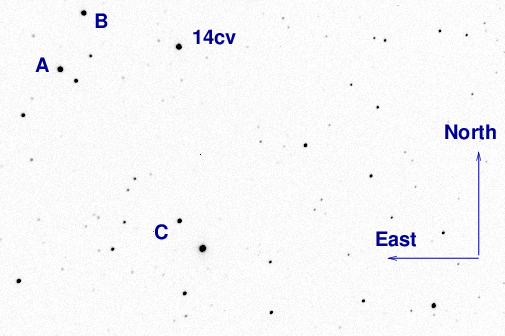
Some of the reference stars marked above have magnitudes in the UCAC4. Specifically, I use these stars to convert the instrumental magnitudes to the V-band scale (though of course, they are unfiltered measurements)
A UCAC44 711-058151 V = 11.518
B UCAC44 711-058147 V = 11.899
The television camera on the finder scope shows the following when we're pointed at ASAS-14cv. North up, East left, field about 1 degree on a side.
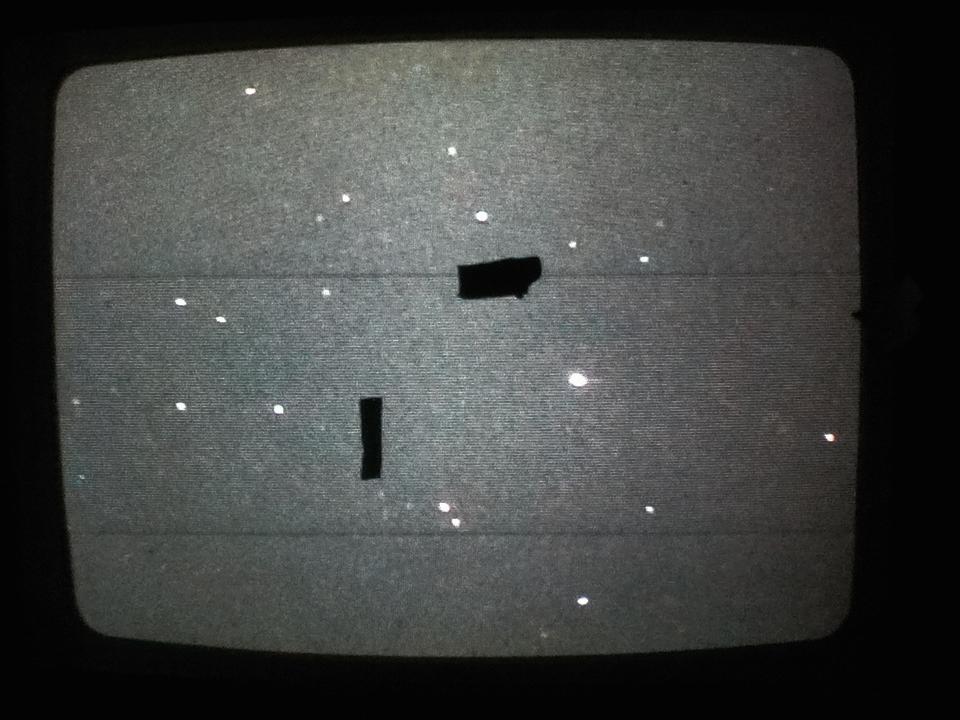
I used 120 second exposures because the target has faded to around mag 16. With these long exposures, star "A" is slightly saturated, so I switched to using star "B" for photometric calibration.
The image adjustment factor graph shows a relatively smooth curve, indicating clear skies.
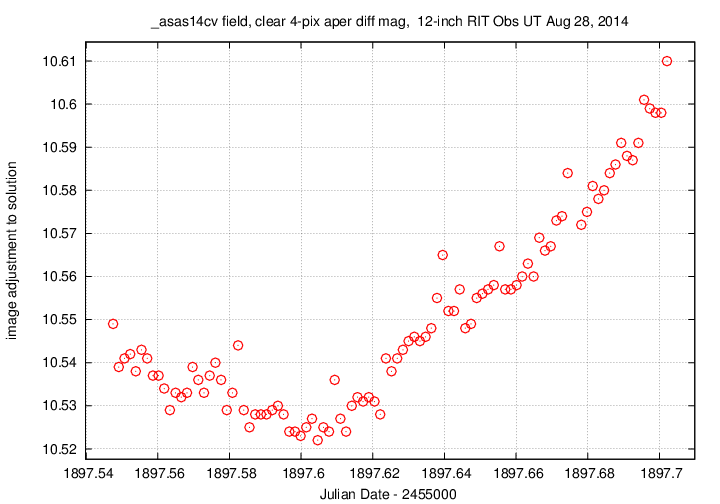
Using aperture photometry with a radius of 4 pixels (radius of 7.4 arcsec), I measured the instrumental magnitudes of a number of reference stars and the target. Following the procedures outlined by Kent Honeycutt's article on inhomogeneous ensemble photometry, I used all stars available in each image to define a reference frame, and measured each star against this frame. I used the UCAC4 V-band magnitude of star "B" to convert the ensemble instrumental magnitudes to a reported "V"-band magnitude (but remember, it's a clear filter).
Sigma-vs-mag plot: The brightest 2 stars are saturated (or nearly so), so I gave them zero weight in the ensemble calculations. The outlier at mag = 1.1 is due to a bad pixel. The target is one of the stars in the ordinary locus near magnitude 6.6.
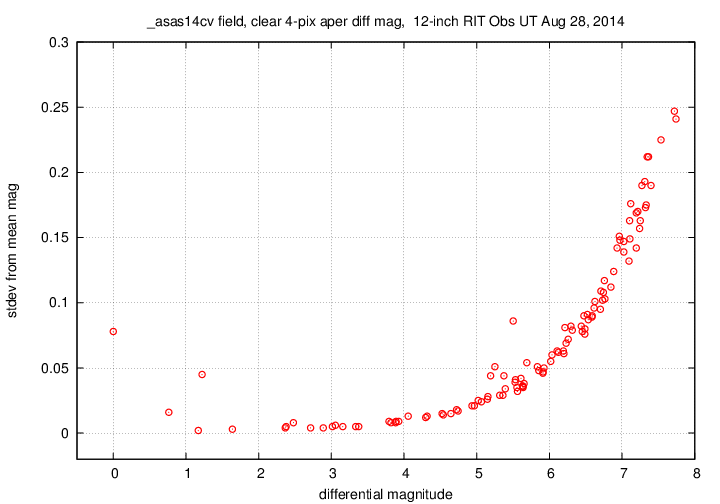
The target, shown in green, shows a roughly steady light curve.
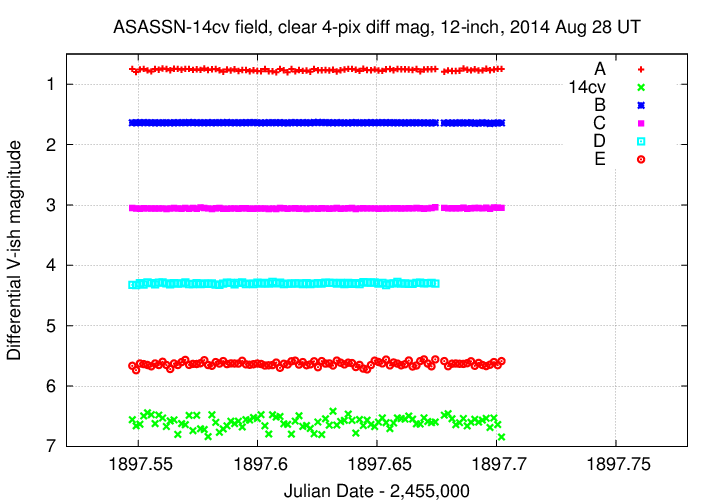
# Measurements of ASAS_SN14cv made at RIT Obs, Aug 28, 2014 UT, # in good conditions. # by Michael Richmond, using 12-inch Meade and SBIG ST-8E CCD. # Exposures 120 seconds long, no filter. # Tabulated times are midexposure (FITS header time - half exposure length) # and accurate only to +/- 1 second (??). # 'mag' is a differential magnitude based on ensemble photometry # using a circular aperture of radius 7.4 arcseconds. # which has been shifted so UCAC4 711-058147 has mag=11.899 # which is its V-band mag according to UCAC4. # # UT_day JD HJD mag uncert Aug28.04752 2456897.54752 2456897.54792 17.287 0.093 Aug28.04911 2456897.54911 2456897.54951 17.390 0.103 Aug28.05071 2456897.55071 2456897.55111 17.362 0.100
Last modified 8/28/2014 by MWR.